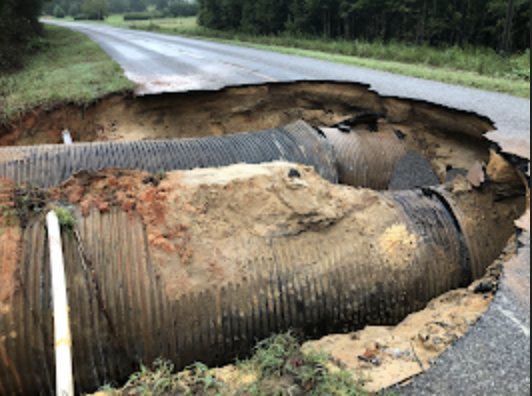Bartram rides…again
Published 12:00 am Wednesday, May 8, 2002
Beneath tall trees draped in Spanish moss a figure clad in a wide-brimmed straw hat, knee breeches and vest, stands quietly, wire-rimmed spectacles perched on his nose, avidly studying a bit of the local flora and fauna.
The studious fellow is named William Bartram. This Philadelphia-educated resident of Savannah and Charleston is on a quest to chronicle the natural beauty of this part of the country. He's going to spend the summer in Alabama
if the Indians don't choose to make him their enemy or the rebel colonists don't decide to run him off, that is.
The year, you see, is 1775. The United States do not yet exist and Alabama is still over 40 years from a declaration of statehood. The Revolutionary War is underway in the original colonies.
William Bartram, a naturalist whose work is backed by English companies, has journeyed south to avoid getting into hot water with the rebel factions. He's come to seek out new plants and animals, to render detailed drawings of his findings and to collect and preserve specimens to send back across the Atlantic to England.
Traveling on horseback, he follows a narrow, primitive route called the Indian path through the Alabama territory. His journeys into the thick, tangled woods are made on foot, metal collection box slung over one shoulder. What William Bartram, scientist, Quaker and poet, finds in this fertile land of wetlands and woodlands is, for him, nothing less than "paradise"…
Meet Dr. John Hall of Tuscaloosa, esteemed professor in his own right and a man who uses his talent, knowledge and enthusiasm to bring William Bartram to life once more in present-day museums, meeting rooms and classrooms across the state.
Hall portrayed Bartram for local history and nature buffs as part of a joint meeting of the Butler County and Lowndes County Historical Societies in April. The meeting was held on the shores of Sherling Lake, very close to where that original Indian path (now dubbed "Bartram's Trail") once ran. The Butler County portion of Bartram's Trail, which was formally dedicated in 1976, runs through the county past the Fort Dale area to Fort Deposit.
The Sherling Lake portion of the trail proved the perfect setting in which the gregarious Hall could share anecdotes of Bartram's travels, teach an impromptu botany lesson and display some authentic tools of the naturalist's trade.
Following his well-received and instructive presentation in the role of the 18th century scientist, Dr. Hall returned to center stage' to share insights into the part Bartram played in local and state and even international history.
"Bartram was the first scientist to see Alabama in its natural state and to write about it. The specimens he sent back to England can still be seen on display in the British Museum today," noted Hall.
While the area was still thick with Indian settlements in those days, this never seemed to pose a problem for Bartram in his travels. "Bartram, a Quaker, was always highly empathetic to the Indians he encountered and that made a big difference…he was fascinated with the Indian culture, taking notes in his journal, drawing their houses, clothing and other aspects of their lives. Bartram gave many white people their first accurate portrayal of what Indian life was really like… he the only legitimate witness of pre-19th century Indians," said Hall.
Because of war blockades locking up access to his journals, diaries and notes, Bartram was unable to publish his findings until 1791. "His book made him quite a famous man in Europe and brought him to the attention of the Romantic poets like Coleridge and Wordsworth…his writings were a definite influence on them," noted Hall.
Bartram's word picture of Alabama has changed somewhat over the two centuries that have passed since the publication of his book.
"Alabama was definitely a wetter, damper place with mature soils back then…there were lots of swampy areas with beaver dams, many big cane prairies along with open plains, fields and forests. The cane prairies used to go on for miles and miles…all that bottom land was drained when King Cotton came along, however. Settlers came along and broke up the beaver dams…the swamps were drained off," explained Hall.
Hall has 40 years of experience in presenting outdoor programs and served for 20 years as chief naturalist for the Alabama Museum of Natural History. He is currently executive director of the Alabama Museum Association and writes for magazines and public television.
Hall also founded the Museum Expedition Series of Archaeology and Paleontology summer camps, now in its 24th year. "It is certainly an honor to have someone like Dr. Hall come and speak at our quarterly meeting," noted the BCHS's Annie Crenshaw. BCHS President Barbara Middleton said Hall plans to return to Butler County next year to present a program on the Creek Indians.
For more information on the Bartram Trail, log on to bartramtrail.org on the Internet.


